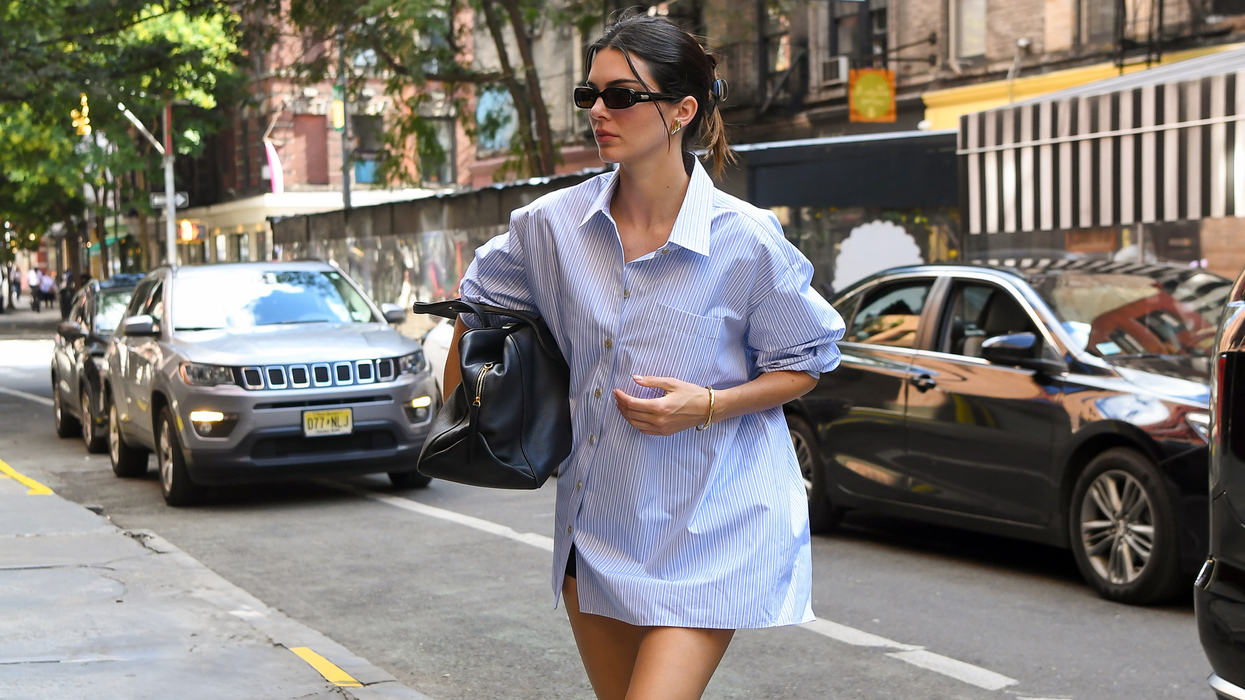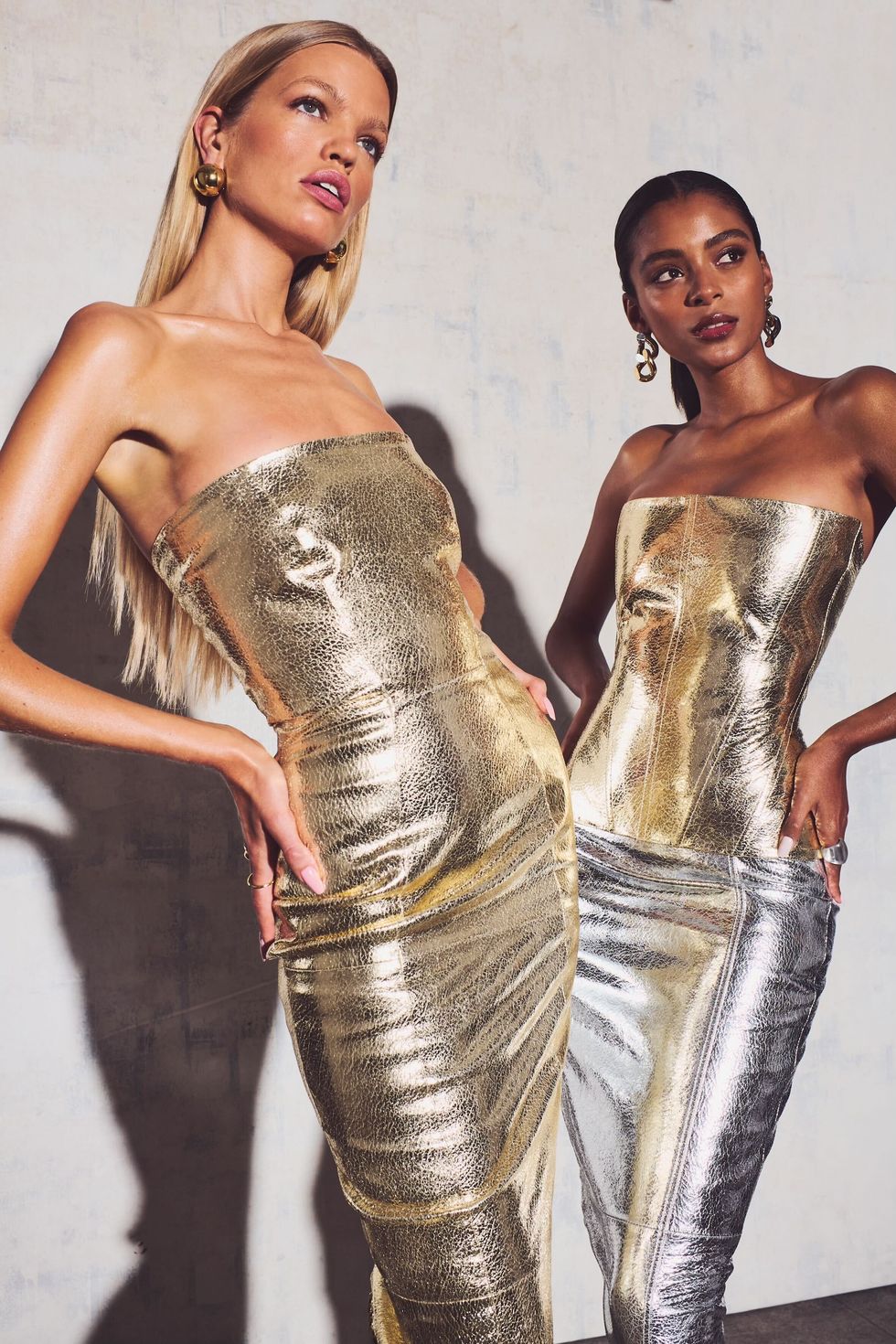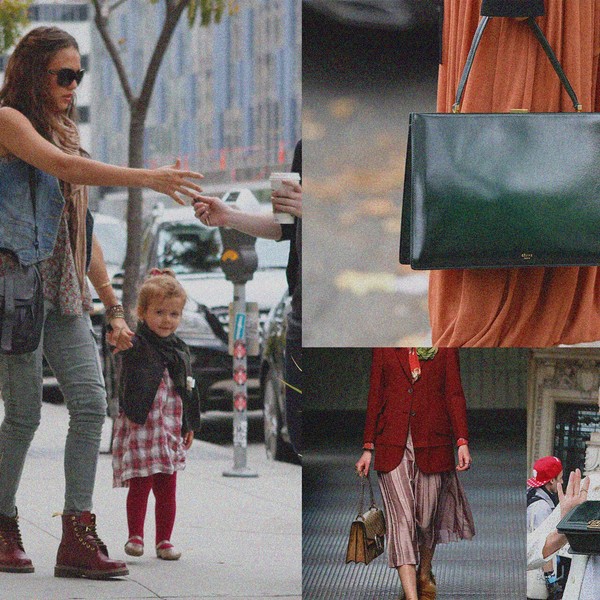Has 'Old Money' Taken the Fun Out of Fashion?
What are the repercussions of “stealth wealth” and “quiet luxury?”

It was supposed to be the style event of the season. Six months after the awards circuit, the rich and famous re-emerged from hibernation to celebrate one sport: tennis. Canons combing the courtside lineup, an international tennis tournament like the US Open or Wimbledon has become a barometer to gauge celebrity-dom’s best dressed — stars raid their closets with the kind of fervor they usually reserve for fashion week. But this year, they did things differently. This year, they wore jeans.
The great dressing down began, as so many fads do, with Gwyneth Paltrow. The defendant in a comical ski-crash lawsuit, day-after-day Paltrow showed up to Utah court this past March in understated but indisputably expensive looks: cashmere, wool, Prada, Celine, served with lashings of gold jewelry. A month later, we got ready with Sofia Richie for her week-long wedding festivities in logo-less Chanel — all while ‘it’ girls descended on Coachella in tees and tanks that cost more than your car payment. By July, Ariana Grande had arrived at Wimbledon with a wool skirt-sweater set and a style decree heeded by girls around the world: old money, stealth wealth, and quiet luxury.
While trends turned over at an untenable rate this year, OM-SW-QL did a remarkable job of holding on. The mandate was ‘inherited access,’ translating, in practice, to WASP-inspired apparel circa 1994: white t-shirts, button-downs, denim, and suiting, and of course an array of crisp, country-club-ready midi dresses. Fashion girls traded their monogrammed Gucci for label-less leather in alarming ubiquity. When quiet luxury crossed over into beauty—removing the acrylics and eye makeup of even the most experimental among us—it seemed all the fun had finally been drained from dressing.
“I hope we can find a balance between minimalism and trend-pressure,” says trend forecaster and consultant Kendall Becker. “Creativity within fashion is key, but so is wearability.

Getty Images
Becker believes quiet luxury’s staying power is a sign of the socioeconomic times. The search term ‘quiet luxury’ has seen a whopping 5,153 percent increase in social buzz in the last three months—a time of increased inflation and en masse layoffs. This, she says, has not only restricted shopping budgets to allow solely for quality staples, but also enhanced our infatuation with wealth and status. Look to recession-core, a style that saw workwear essentials like blazers and belts spill into nightclubs around the world, and bolstered the popularity of high society soaps like Gossip Girl. Shopbop fashion director Caroline Maguire says we might have seen it coming.
“The old money/quiet luxury aesthetic has been around for awhile, always hiding in the background,” she explains, adding that the site reorganized the pieces that fit the trend to be “ahead of the conversation.”
Now, the style has evolved into what can only be described as the rather austere baby of Matthieu Blazy’s Bottega Veneta and Brandy Melville basics. For Ohad Seroya, co-founder and creative director of occasionwear brand Retrofête, quiet luxury has stripped maximalism from fashion.
“Quiet luxury is all about the essentials, which every woman absolutely should have in her rotation, [but] both minimalist and maximalist attire make you feel confident and powerful in their own ways,” he says.
With the exception of a few more muted pieces, Retrofête is about as loud as luxury gets. The brand’s offerings are priced upwards of $600, and are delightfully lavish: sequins, metallics, crochet accented with crystals. Blair and Serena may have worn Ralph Lauren to Thanksgiving, but it’s a designer like Retrofête they would call on for the gala. With the trend pendulum swinging so far in the other direction, it’s likely that Retrofête’s specificity as occasion-wear may have been their sales’ saving grace this year.
“Our clients come to us for a reason,” continues Seroya. “They want over-the-top pieces that elevate the everyday. These pieces are then brought to life by Retrofête’s signature DNA—with the pops of color and crystalized elements we’re known for.”
Even though Los Angeles-based stylist and creative director Haile Lidow’s five-room closet is overflowing with color, she considers the widespread commitment to basics “refreshing.” Quality of craftsmanship is one of her biggest sartorial turn-ons—something she claims has been recently sacrificed in the face of widened profit margins and fast-cycling micro-trends. The ‘stealth wealth’ aesthetic, she says, might force fashion brands to return to form.

Courtesy of Retrofête
“[For a long time] we have wanted it all, wanted it immediately, and wanted everyone to know we have it,” she says. “Quiet luxury as a concept is the antithesis of that. Maybe it costs more, but you are paying for quality and ultimately buying less because they are timeless staples. It's the opposite of this showman mentality.”
“[Quiet luxury] has absolutely set me free,” says publicist Audrey Steele, who runs a fashion PR firm in Los Angeles. “It allows me to be boring shamelessly, and not be judged for it.”
Steele categorizes her own personal style as “simple and timeless.” Now, Steele makes mood boards anchored with luxury rewearable staples, before scouring the Internet for less expensive designer “dupes.” Mostly, she’s inspired by Kendall Jenner, whose minimalist aesthetic is easier to recreate for less, and flatters Steele’s own body type.
“Anyone’s budget can really make it work,” she explains. “Places like the Gap, Old Navy, and J. Crew have had these resurgences because you really don’t have to spend tons of money to adhere to the aesthetic.”
One such retailer enjoying the trend’s persistence is Everlane, who have been unwaveringly committed to ethical basics that go the distance. Mathilde Mader, the brand’s Chief Creative Officer, says that in recent times they’ve shifted to create a “forever wardrobe” for consumers—prioritizing versatile staples that wearers can return to time and time again.
“In a way, our design perspective is the very definition of quiet luxury,” Mader explains. “Ultimately, our goal is to take the quiet luxury concept and make it accessible to anyone who wants to partake—helping our customers look refined while maintaining affordability and sustainable production.”
For smaller brands, a style sensibility rooted in quiet luxury is a very happy coincidence. Since launching three years ago, the affordable occasion-wear designer MARBL has seen hundred percentile growth year-to-year, with customers in hot pursuit of their wrap satin shirts and skirts, or floor-length slip dresses. With a steady uptick of 4000 new customers a month, things are anything but quiet over at MARBL.

Courtesy of Everlane
“The recent boom of quiet luxury is something we were counting on,” says founder Kamila Zhaxylykova. “Our commitment to quality and a timeless, minimalist style has resonated with customers seeking understated elegance.”
“For many years it felt like we operated in a small echo chamber of people who have been championing a less-is-more approach to fashion,” agrees Brandy Dallas, founder and creative director of Sans Faff, a Singapore-based womenswear brand that specializes in streamlined pieces. “So it’s been incredibly uplifting to see consumers shift their attention away from purchasing large quantities of inexpensive, trend-driven pieces to more timeless well made investment pieces.”
While Dallas may be right about our desire for investment pieces, the market for fast fashion is still booming. Ironically, the fall-winter collections of Zara, Mango and even SHEIN (which recently introduced its ‘premium collections’ as ‘MOTF’) are chock-full of stealth wealth-coded pieces, thereby undermining the trend’s primary objective: quality over everything.
Still, even these pieces have become essential in simplifying day-to-day dressing for women around the world. With an array of elevated basics at her disposal, Audrey Steele says she no longer overthinks her outfits (“lean into the simplicity and apply that to your personal style,” she advises). It can be especially liberating, adds Lidow, for those suffering from decision fatigue.

Getty Images
“If approached as a shift from loud consumerism to a more quiet, conscious form of buying higher quality, lasting items in less quantities, then it can be a freeing way to establish a core wardrobe,” Lidow explains. “These staples can then last for decades and be worn alongside fun, trendy items that may come and go with the seasons.”
Nonetheless, Lidow says we may be on the precipice of a vibe shift. With the globalization of fashion trends via social media sacrificing more “niche” personal style, the pendulum may soon swing to see us re-embrace sartorial diversity. Shopbop’s Maguire agrees, predicting while quiet luxury will persist, the latter half of 2024 will herald the adoption of prints and brighter color. Seroya, of Retrofête, says quiet luxury’s days may be numbered—for some of us, anyway.
“While the quiet luxury trend has certainly seen a boost over the past few months, its classic roots are nothing new,” he says. “For those who value minimalism above all else, it's only natural that their clothing will remain simple. However, for those who were only testing out the trend, I’m seeing that they’re ready to get back into statement dressing—wearing pieces that are meant to highlight their character.”
It’s a much-needed reminder that not one trend fits all. While everyone should allow themselves the runway to sartorially experiment—budget permitting—we have to alleviate the pressure to subscribe to the latest styles, lest we feel shackled by them. There’s an occasion for every kind of closet, and while we might have felt soothed by the quiet, there may soon come a time you’re ready to break the silence.
“I think it’s important for people to simply have a good understanding of and, of course, have fun with their style,” Steele says, adding: “But, responsibly.”
Want more stories like this?
How Style Icon Carolyn Bessette-Kennedy's Minimalism Paved the Way for Aesthetic Movements Like “Stealth Wealth” and TikTok’s “Clean Girl”
Have We Reached Peak-Bow This Holiday Season?
Stylist & Fashion Publicist Lilly Sisto Packed Bright Colors & Lots of Linen for 1 Week in India




